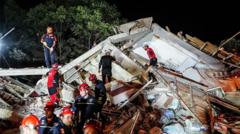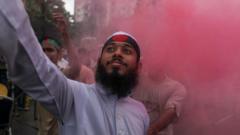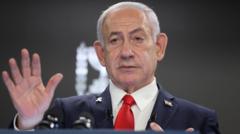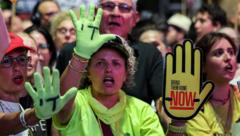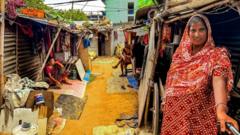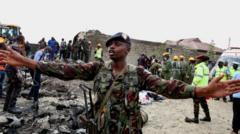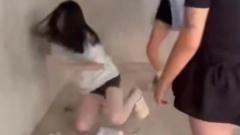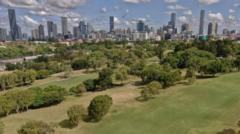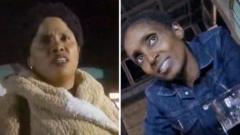Protests against President William Ruto's government turned deadly in Kenya, with police clashes resulting in eight deaths and 400 injuries. Amidst government restrictions on media coverage, demonstrators rallied in significant numbers, demanding leadership accountability and change.
Violence Erupts in Kenya as Protests Against President Ruto Claim Eight Lives
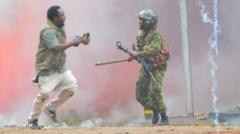
Violence Erupts in Kenya as Protests Against President Ruto Claim Eight Lives
Nationwide demonstrations in Kenya lead to clashes with police, leaving at least eight fatalities and hundreds injured.
At least eight people have died and 400 others have been injured during a wave of protests across Kenya directed at President William Ruto's administration, according to health officials and human rights organizations. The unrest saw police utilize tear gas and water cannons to disperse thousands of demonstrators who took to the streets, chanting slogans calling for Ruto's resignation and brandishing branches as symbols of peaceful dissent.
In a controversial move, the Kenyan government attempted to suppress live television and radio coverage of the demonstrations, but this ban was struck down by the High Court in Nairobi. Speaking at a funeral service in Kilifi County, Ruto appealed for calm, emphasizing that protests should not jeopardize national peace and security. "We do not have another country to go to when things go wrong. It is our responsibility to keep our country safe," he stated amidst the growing unrest.
The absence of Ruto from his official residence raised eyebrows as crowds approached, intending to challenge police barricades erected around key routes, including those leading to his office and the parliament. Last year's protests marked a significant moment in Kenyan history as they resulted in over 60 deaths when tensions erupted after demonstrators stormed parliament, leading to parts of the building being set ablaze.
Although the Kenyan authorities have yet to release official casualty figures for the current protests, a joint statement from the Kenya Medical Association, the Law Society of Kenya, and the Police Reforms Working Group confirmed the eight fatalities and highlighted the serious injuries sustained by demonstrators and police alike, including eight sufferers of gunshot wounds.
In the face of the violence, Amina Mude, a protesting mother, expressed her concerns, stating, "I feel like as a country we're not going in the right direction, especially in education and everything happening." As witnesses captured video footage of the protests, images of tear gas clouds filled the area, forcing demonstrators to flee.
The protests held stark visual reminders of previous unrest, with memorials set up around parliament bearing wreaths and written tributes from mourning families and resilient youths, linking the current civil discontent to last year's shocking toll of lives lost at the hands of security forces. The events unfold as Kenya's youthful population continues to advocate for fundamental changes, driven by economic grievance and a desire for accountability from their leaders.

